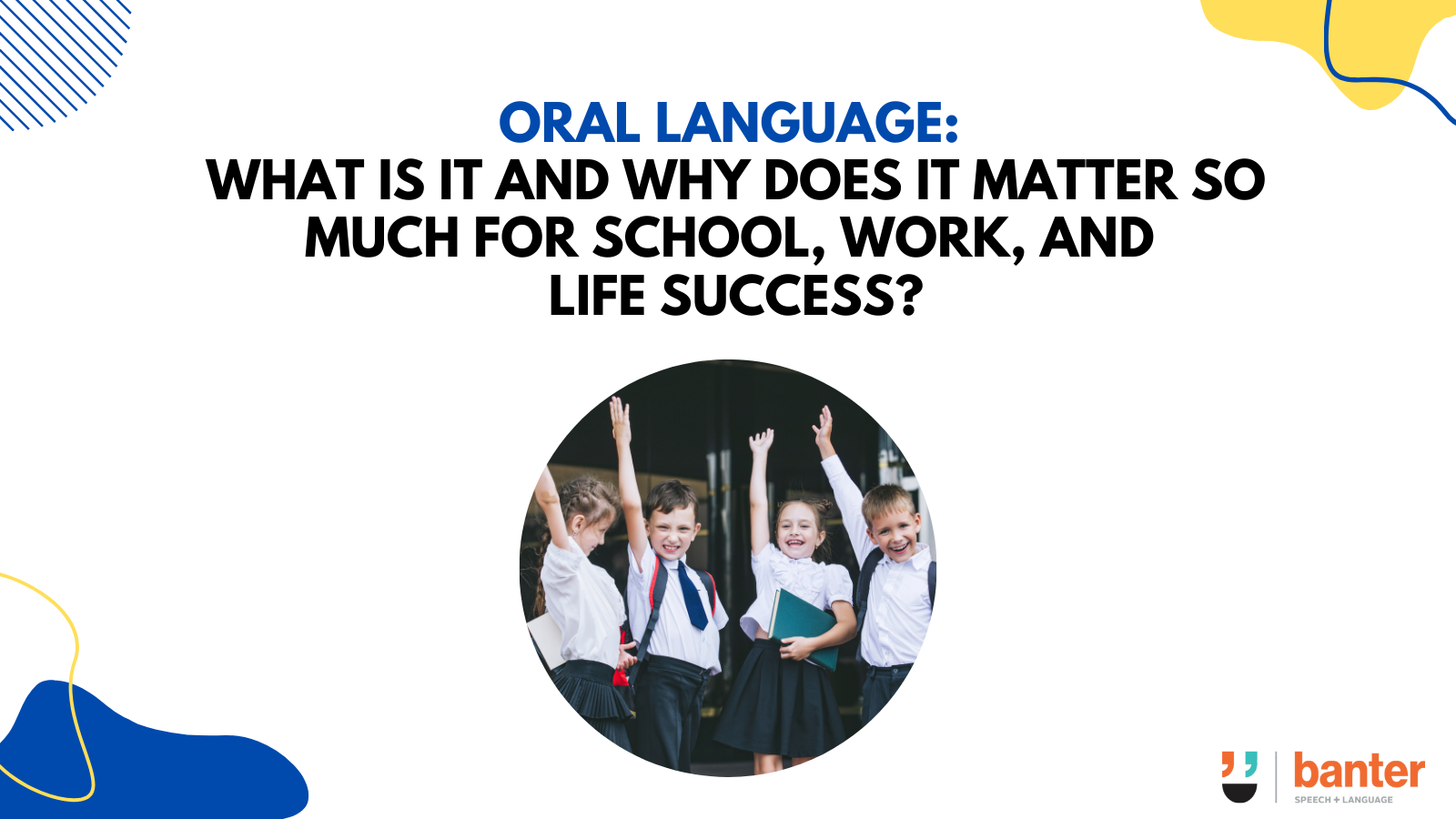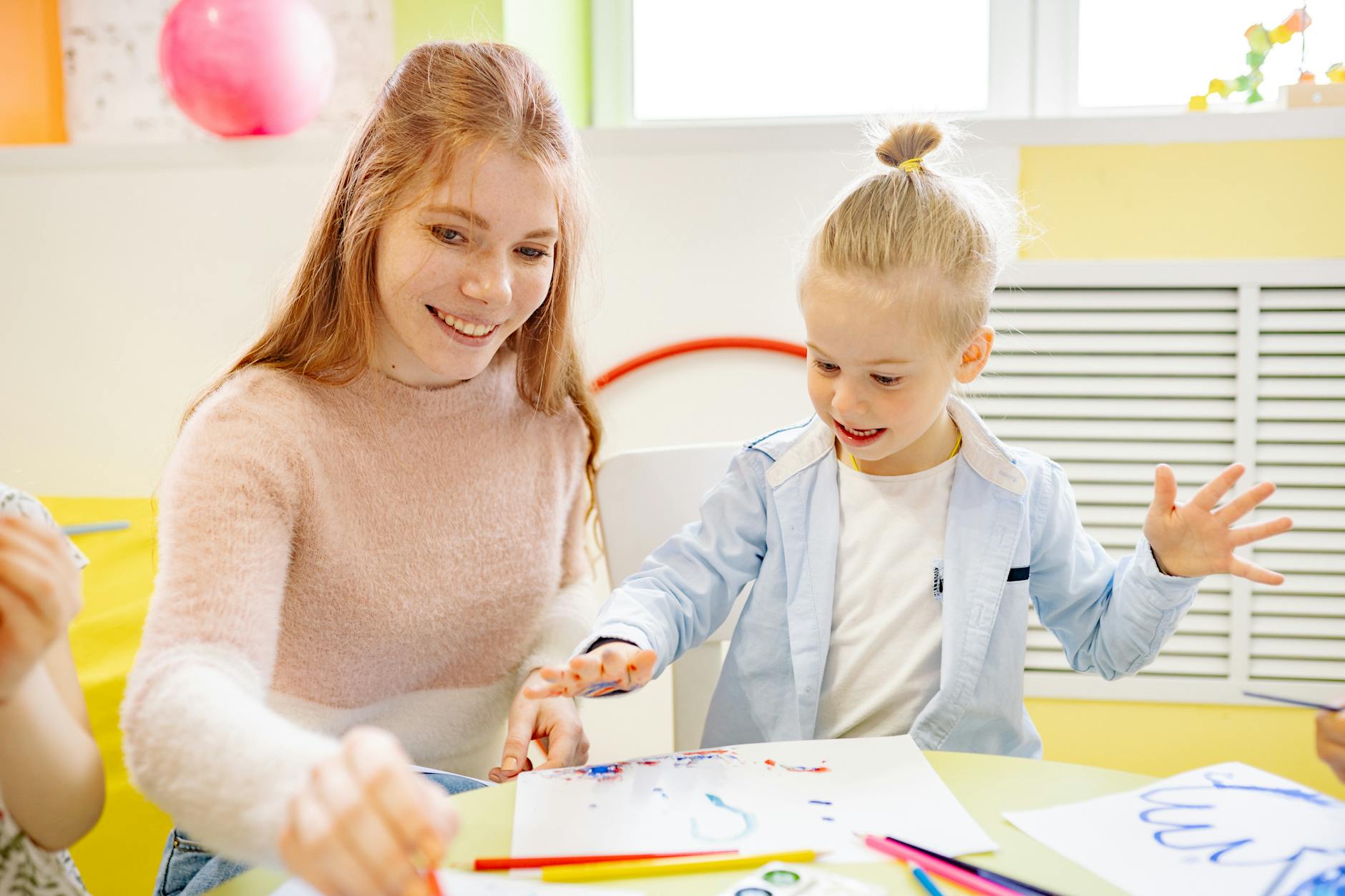Oral language: what is it and why does it matter so much for school, work, and life success?
Oral language is a wonder. Across time and cultures, most people develop oral language skills without much conscious effort. As a species, oral language has helped us to survive, reproduce, and to cooperate with each other, even in very hostile conditions. As individuals, oral language is crucial for social development, reading comprehension, learning, academic participation, and for work and life success.
But what is oral language?
As a speech pathologist who works with people with Developmental and other Language Disorders, one of the most frustrating things about oral language is just how hard it is to explain to others in Plain English. I’ve tried a few times, without much success.
I’m going to have another go now!
A. Not just complicated.
Some things are made up of many interconnected parts. We describe these things as “complicated”. Cars and coffee machines are good examples. Often, the parts of complicated things work together in defined and limited ways to produce a result, like letting me drive down my street, or producing a hot cup of coffee.
Language is made up of many connecting parts. But it is not like a car or a coffee machine. Oral language is not just complicated: it’s a complex system.
B. What do we mean by a complex system?
Not only is language made up of lots of parts, but the parts interact with each other in lots of different – and often unpredictable – ways. This makes language complex, like weather or the health system.
Oral language involves listening (receptive) skills; and speaking (expressive) skills. It also includes different forms, content, and uses, as shown in this famous model:
C. Everything is connected!
This sounds like something from James Cameron’s Avatar or something to be discovered on a life-changing meditation retreat. But, with oral language, it happens to be true.
Some children have language problems that affect primarily one sub-system or part of language. For example, many children with language disorders have difficulties with word forms (e.g. past tense verbs, like “jumped” or “flew”) or syntax (e.g. understanding and using complex sentences like “The boy ordered a pizza because he was hungry”, “Before you have breakfast, make your bed”, and “The dog was walked by the man with the grey hair”). But everything is connected, and language problems do not segregate into neat subtypes.
As a practical example, consider the word “because”. If a 6-year-old child does not understand the word “because” and how it’s used, he or she will:
- be unlikely to understand or use the word correctly as part of his or her vocabulary (a language content deficit);
- have difficulties understanding or using the word as a subordinating conjunction in complex sentences (a language form deficit);
- have difficulties understanding or explaining cause and effect relationships in words, meaning they may not be able to answer questions or follow instructions from a teacher that include the term (both examples of language use deficits);
- perhaps be perceived by the teacher and the child’s peers as unintelligent, impolite or disobedient (an example of the social stigma and low expectations that often accompany language difficulties); and
- perhaps become reluctant to engage in future interactions and situations requiring knowledge of “because” (an example of how language deficits can reduce participation and inclusion over time).
Focusing on one aspect of language difficulty – e.g. receptive syntax or expressive vocabulary – in isolation doesn’t make a lot of sense when all aspects of language interact and feed into each other. Language difficulties in one area can have serious, systemic knock-on effects.
Rather than trying to sort language problems into arbitrary categories or leaky buckets, it’s better to just use the term “language disorder” and think about treating the system. (You can read more about language therapy here.)
D. Typical language development
Given its complexity, it’s incredible that so many of us learn to understand and to use oral language without much direct instruction. But some people aren’t as lucky. It’s useful to know about typical patterns of language development so that people with, or at risk of, language disorders are picked up and helped as early as possible.
Note that this section summarises typical language development for monolingual children. For information about bilingual language development, please check out our separate article here.
Language development typically follows this pattern:
- Understanding of language usually comes before speaking.
- From the first months, most children develop native speech perception and production skills based on the language or languages the child is surrounded by.
- Speech production starts with single words, followed by word combinations, to simple sentences and then more complex sentences.
- Between 18 months and 6 years of age, children learn lots of new words: around 50 words at 18 months to around 10,000 words by 6 years. Word and sentence syntax skills also develop rapidly.
- In infant, toddler and preschool years, most of the language a child hears is oral language.
- When literacy begins in late preschool or early school years, an increasing amount of language input comes from printed words, e.g. in books.
- Early oral language skills are a good predictor of early reading development. But, later, reading and spoken language development piggyback off each other. For example, quality books often contain more sophisticated vocabularies and sentence structures than conversational speech.
- During the school years, language skills continue to develop and be refined into adolescence, alongside various forms of “meta-linguistic awareness” (the conscious awareness of oral and written language and how it is used).
E. Things that are known to affect language development
Oral language development is influenced by many factors, including:
- genes. In children aged 2-4 years, the heritability of language is about 30% but this rises to around 60% by the age of 12 years. The genetic correlation between oral language and reading comprehension is above 0.80;
- socioeconomic status (e.g. factors like parental education, income, and housing). On average, children aged 30 months-3 years from professional families are exposed to 11 million words in a year, compared to an average of 3 million words for children from the poorest families. Parent-child interactions for children from high socioeconomic backgrounds are, on average, more conversational than for children from low socioeconomic backgrounds. On average, parents with lower socioeconomic backgrounds tend to be more directive with their children, though, of course, there are many examples where this is not the case. Poverty has a big impact on reading outcomes too: you can read more about why poor kids are more likely to be poor readers here;
- home learning environment. This includes the language and literacy skills of parents (which are of course also affected by genes), as well as the number of books in the home and the parents’ reading habits. You can read more about the importance of the home learning environment here;
- the interaction between your genes and your environment. For example, if you are good at using language, you will probably seek out more language-based activities. If you have poor social language skills, you will probably have less satisfying social interactions and socialise less; and
- other known risk factors for language disorders: we’ve summarised some of the main known risk factors here.
F. This is interesting. Tell me more!
My favourite response, and why we write this blog!
Here are my recommendations for further reading about different aspects of oral language. For each article, we include references to peer-reviewed research:
(1) Language Form
For information about phonological (speech) development, check out:
- In what order and at what age should my child learn to say his/her consonants?
- 10 common speech error patterns seen in children of 3-5 years of age – and when you should be concerned
- Lifting the lid on speech therapy: How we assess and treat children with unclear speech – and why
For information about early morphological development, check out:
For information about syntax, check out:
- Speaking for themselves: why I choose ambitious goals to help young children put words together
- Following instructions: why so many of us struggle with more than one step
(2) Language Content
For information about vocabulary, check out:
- How do babies and toddlers choose their first words?
- Late talkers: how I choose which words to work on first
- How to help your school-age child learn new words
- Reading with – not to – your preschoolers: how to do it better (and why)
- For reading, school and life success, which words should we teach our kids? How should we do it?
- 10 great words to teach young high-schoolers (and why) – with brilliant free resources!
For information about categories, semantic development, sequences, and inferences, check out:
- Parents: teach categories to your kids to ignite language development
- “Huh?!” The many benefits of using Blank’s Language Levels framework to help your kids to understand language for school
- Five ways to boost your child’s oral language and reading comprehension skills with sequencing
- Help your child to fill in the gaps, join the dots, and read between the lines! (Improve inferencing skills for better reading and language comprehension)
(3) Social Use of Language (also called pragmatics)
We use oral language to communicate in different places with different people and for different purposes (pragmatics). For more information, check out these resources:
- What is “pragmatic language”? The social use of language
- Key behaviours to look for in the pragmatic (social) language development of children aged 0-5 years
- Pragmatic language for 5-11 year-olds includes (at least) 27 observable behaviours
- Helping Children with Pragmatic (Social) Language Challenges. Some Evidence-based Themes
(4) Language Disorders and the importance of focusing on strengths, participation and inclusion
People with language and other communication difficulties are not broken and don’t need to be “fixed”. People are not their disorders.
Lots of researchers, speech pathologists, psychologists, teachers, families and people with language disorders are focused on learning more about language and how to mitigate the effects of language difficulties.
It is never too late to seek help! Find out more:
- Developmental Language Disorder: A free guide for families
- Beyond ‘fixing’: using the ‘F-Word Framework’ to support children with communication disorders and their families
- Focusing speech therapy on functional outcomes: a refresher
- Parents of children aged 0-5 years: 10 practical ideas to increase your child’s participation and communication skills
- Parents of children aged 6-12 years: 10 practical ideas to increase your child’s participation and communication skills
- Parents of children aged 13-15 years: 10 practical ideas to increase your child’s participation and communication skills
- Parents of teenagers aged 16-18 years: 11 ideas to increase participation and communication skills
Key source for the information in Parts D and E: Hulme, C., Snowling, M., West, G., Lervåg, A, and Melby-Lervåg, M. (2020). Children’s Language Skills Can Be Improved: Lessons from Psychological Science for Educational Policy. Current Directions in Psychological Science, 29(4), 372-377.

Hi there, I’m David Kinnane.
Principal Speech Pathologist, Banter Speech & Language
Our talented team of certified practising speech pathologists provide unhurried, personalised and evidence-based speech pathology care to children and adults in the Inner West of Sydney and beyond, both in our clinic and via telehealth.








